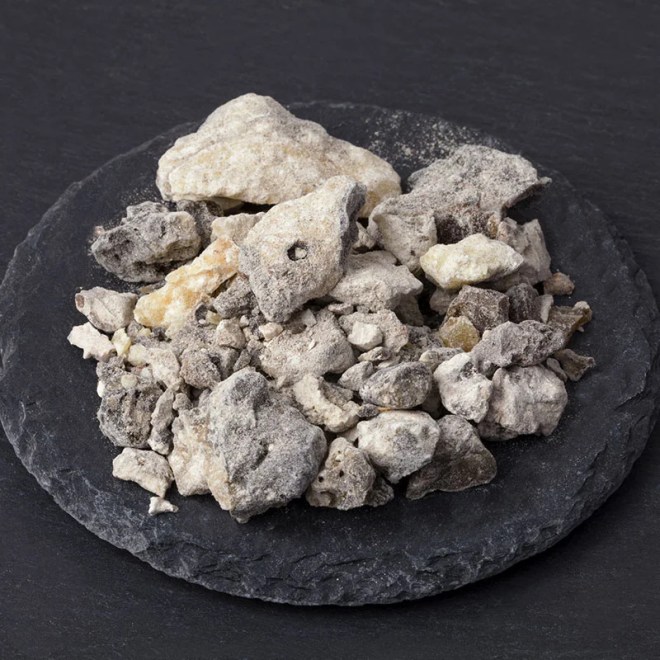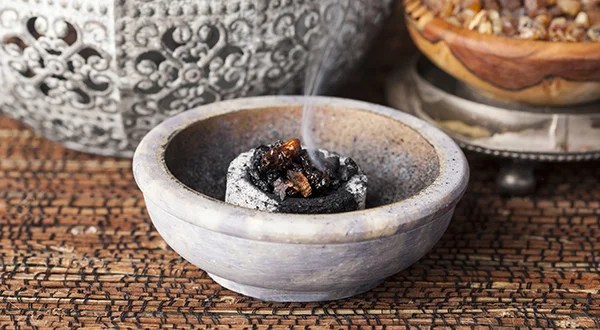What is Copaiba Essential Oil?
Copaiba balsam or copaiba essential oil is a slightly viscous liquid of a yellow-brown color with a mild woodsy, spicy and resinous aroma, presenting a base fragrance note. Copaiba oil is distilled from the balsam or oleo-resin of Copaifera specie, an evergreen tree in the Fabaceae family.
Several species of Copaiba such as Copaifera officinalis, C. reticulata, C. langsdorffii, etc., are in South America, and contain numerous medicinal properties, which have been used by the native population since ancient times.
The essential oil of copaiba balsam blends well with angelica, chamomile, vetiver, frankincense, pine, palo santo, spikenard, lavender, juniper berry, clove, mandarin, neroli, rose, sandalwood, black pepper, grapefruit, lemon, lemongrass, ylang ylang, cypress, eucalyptus and green myrtle essential oils,
About Copaiba Tree (Copaifera reticulata)
Copaiba trees belong to the genus Copaifera, family Fabaceae, and subfamily Caesalpinoideae.
There are more than 70 Copaifera species distributed throughout the world, with widespread occurrence in Central and South America; there are also four species found in Africa and one species found on the island of Borneo, situated in the Pacific Ocean.
Brazil is the country with the greatest biodiversity of Copaifera with 26 species and 8 varieties. Most common species are officinalis, langsdorffii and reticulata.
The copaiba trees have shrub or arboreal habits, can reach up to 40 m height and 4 m diameter at breast height, have slow growth, and can live up to 400 years.
This natural product is known and valued to the present day, mainly in the Amazon region, where the rural population has little access to industrialized pharmaceutical products and public health care.
Other common names for Copaiba are: copaipera, cupayba, copauba, copal, balsam copaiba, copaiva, copaiba verdadeira, Jesuit’s balsam, copaibeura de Minas, cobeni, Matidisguate, matisihuati, mal dos sete dias, aceite de palo, pau de oleo and básamo de copayba.
Origin of Copaiba Tree
The genus Copaifera is native to tropical regions of Latin America, an area of great species diversity. Distributed widely in the Americas, stretching from Mexico to northern Argentina, the genus also occurs in West Africa and Asia. However, the greatest richness of species occurs in Brazil, where they are distributed from the north to the south of the country.
Population density of copaiba trees in an area is usually very low. It is possible to find only one tree every 5 ha, but they may occur in densities of one to two trees per hectare.
Oil Production
The production of oleoresin by species is fairly variable and can be influenced by genetic differences among species, habitat, soil, and intensity of exploitation. The production of oleoresin per tree ranges from 100 mL to 60 L per year.
In addition, not all trees produce oil. Therefore, detailed investigations regarding extraction methods and equipment that do not harm the plant, correlation of genetic data to botanical identification of species, floristic inventory of copaiba populations, and ecological studies on its ecosystems are indispensable for the sustainable and rational use of this resource.
Copaiba Tree in History
It is said that the name copaíba probably originated from the Tupi-Guarani and alludes to the names used by indigenous peoples: copaíva and copahu (kupa’iwa and kupa’u, respectively), which refers to the tree exudate, in reference to the oil stored in its interior.
Sixteenth-century records produced by chroniclers during the Brazilian colonization, report the widespread use of copaiba oil among the natives as anti-inflammatory and healing agents, and also for esoteric purposes, such as aphrodisiac and contraceptive.
The oleoresin of Copaifera trees has been widely used as a traditional medicine in Neotropical regions for thousands of years.

Resin from the trees is harvested by the means of an incision, like in harvesting rubber, made on wild trees of the Amazonian rainforest, mainly in Brazil, but also in Peru, Colombia and Venezuela. Native Amerindians from that region have used it since immemorial times as a topical medicine. and remains a popular treatment for a variety of ailments.
Nowadays in Pará state (Amazon region, Brazil), people of all ages and social classes consider copaiba one of the most important natural remedies from the Amazon region.
Several parts and preparations of the plant are still used in folk medicine. The oleoresin or bark decoction is used as an anti-inflammatory and contraceptive by native people from the Brazilian Amazon.
Traditional Folklore
Indigenous tribes use copaiba resin topically as a wound healer, to stop bleeding, for skin sores and psoriasis. In Brazilian herbal medicine, the resin is used as a strong antiseptic and expectorant for the respiratory tract (including bronchitis and sinusitis), as an anti-inflammatory and antiseptic for the urinary tract (for cystitis, bladder and kidney infections). In the United States it was an official drug in the U.S. Pharmacopeia from 1820 to 1910.

Chemical Compounds of Copaiba Essential Oil
The copaiba resins are generally composed of a volatile oil made up largely of sesquiterpene hydrocarbons, such as β-caryophyllene, α-copaene, α-trans-bergamotene + β-elemene, α-humulene, and germacrene D. In addition, the oleoresin is also made up of several biologically active diterpene acids, including copalic acid, kaurenoic acid, alepterolic acid, and polyalthic acid.
Properties of Copaiba Essential Oil
Balsam Copaiba essential oil have shown remarkable biological activities documented by research, many of which have been attributed to its significant percentage of b-caryophyllene that carries anti-inflammatory, analgesic and anti-spasmodic benefits, as well as B-caryophyllene which is known to be antiviral and have immunostimulant properties. In addition, there has been some animal research that shows b-caryophellen and a-humulene to have some anti-tumoral benefits.
Also, copaiba oil has antibacterial, anticancerous, cellular protector, gastroprotective, insecticidal, neuroprotective, antiparasitic, antioxidant, antiulcerous, antileishmanial, antiproliferative, antitrypanosomal, wound-healing, antifungal, antiseptic, calming, cicatrisant, cooling, decongestant, expectorant and energizing properties.
Additional properties/actions documented by traditional use: anesthetic, antacid, astringent, carminative, cough suppressant, disinfectant, diuretic, emetic (causes vomiting), emollient, expectorant, laxative and stimulant.
Uses of Copaiba Essential Oil
Medicinal Uses
The topical application of copaiba oil on the skin serves to heal wounds. Also, it is used in massages on the head to cure paralysis, pains, and convulsions.
In Amapá state, it is recommended to soak a cotton ball in the oil and place on tumors, ulcers, or hives.
The daily intake of two drops of copaiba oil mixed with one tablespoon of honey is indicated for inflammation, syphilis, bronchitis, and cough.
In Venezuela, copaiba essential oil is used to prepare a patch that is applied to heal ulcers and wounds, and the decoction of the bark in the form of a bath is used to combat rheumatism, to wash infected wounds such as dog bites, and to use as an anti-tetanus.
A tea from the seeds is also used as a purgative and for treatment of asthma. In northern Brazil, the practice of “embrocation” (applying oil directly to the throat) is common to treat throat infections. In Belém, the “garrafada”—an infusion of the bark sold in bottles—is currently used as a substitute for the oleoresin due to the difficulty in obtaining copaiba oil in the city.
The many therapeutic uses for Copaiba Essential Oil
Copaiba oil has a wide range of ethno-pharmacological indications, including for the treatment of:
- Cystitis, urinary incontinence, urinary tract disorders, vaginal discharge, gonorrhea, and syphilis;
- respiratory ailments, including bronchitis, coughs, asthma support, excessive mucous, flu, strep throat, hemoptysis, tuberculosis, pneumonia, and sinusitis;
- infections in the skin and mucosa, such as dermatitis, herpes, eczema, skin sores, psoriasis, and wounds;
- ulcers and lesions of the uterus;
- leishmaniasis and leucorrhea;
- tetanus;
- hypertension;
- nervous system (mood stabilizer, quiets and centers the mind);
- anemia and hemorrhages;
- gastric disorders, stomach ulcers, intestinal parasites, diarrhea and dysentery;
- bladder infections and kidney inflammation;
- arthritis, joint and muscle pains;
- headaches and
- snake bites.
The essential oil of copaiba is also used for its aphrodisiac, stimulant, anti-inflammatory, antiseptic, antirheumatic, diuretic, disinfectant, anthelminthic, anticancer, antitumor (prostate tumors), and antiparalytic properties.

Human Nutrition
Copaiba oil was approved in the United States as a food additive and is used in small amounts as a flavoring agent in foods and beverages.
Cosmetic Uses
The species of Copaifera are intensively pursued for inclusion in the cosmetics market due to their therapeutic properties and fragrant value of their oils.
It can be added in the beauty routine to give the skin a youthful and radiant glow, while moisturizing and nourishing both skin and hair.
Copaiba oil is currently used in the cosmetic industry as a fixative for perfumes and perfuming soaps.
As an emollient, bactericidal, and anti-inflammatory agent, copaiba oil is used in the production of soaps, lotions, creams and moisturizers, bath foams, shampoos, and hair conditioners.
In addition, it aids in the treatment of dandruff and acne. Despite its fragrant value, little information regarding its odorant potential is available in the literature.
Use it to give skin a youthful, radiant glow while moisturizing and nourishing dry skin and hair.
Fuel
As a renewable source of hydrocarbons, the use of copaiba oil as an ecologically clean fuel has been evaluated.
Experimental plantations were started in the early 1980s near Manaus, Brazil to test its viability as an alternative energy source to fossil fuels. For potential use as fuel, a combination with diesel oil in a ratio of 9:1 (diesel oil to copaiba) has been recommended.
Various reports indicate that the liquid can be poured directly into the fuel tank of a diesel-powered car and the vehicle will run normally, with a bluish exhaust smoke being the only noticeable difference.
Traditionally, the oil is used in lamps as fuel for lighting.
Veterinary Uses
In southern Pará state, farmers have used copaiba oil to prevent foot-and-mouth infection in cattle.
The oil is poured on the floor next to the salt lick so that when cattle approach to eat salt, they step in oil soaking their feet.
When wounded, some animals lick and rub their bodies in the oil that flows from the trees.
Other Uses
Hunters often hunt under the copaiba tree during fruiting because the seeds and oil attract animals.
Copaiba oleoresin is used in the photographic industry to improve image clarity in areas of low contrast and resolution.
The resin has also been used in paper making, as an additive for butadiene in the production of synthetic rubber, as a source of a chiral substrate in the synthesis of biomarkers of sediment and oil residues, and as fixative in the manufacture of varnish, perfume, and paints used in the painting of porcelain, fabrics, and for dying cotton yarn.
Benefits of Copaiba Essential Oil
Antiparasitic Activity
Several Copaifera oleoresin oils have shown in vitro antiparasitic activity against Leishmania amazonensis promastigotes, (including C. cearensis, C. langsdorffii, C. lucens, C. martii, C. multijuga, C. officinalis, C. paupera, and C. reticulata).
In addition, a number of parasitic protozoal proteins have been identified as potential targets for antiparasitic chemotherapy.
You may like to visit:
Peru Balsam Essential Oil Uses, Benefits and WarningsAntibacterial Effects
Copaiba oil has shown antibacterial activity against several strains, in particular, Gram-positive Bacillus subtilis and Staphylococcus aureus.
Anticancer Activity
Copaiba oil have exhibited both in vitro and in vivo antiproliferative activities. Copaifera reticulata oleoresin, for example, has shown in vitro cytotoxic activity against human lung fibroblast cells..
Furthermore, in a mouse model of lung metastasis and tumor growth, oral administration of Copaifera multijuga oleoresin reduced tumor growth, tumor mass, and number of lung nodules after inoculation of tumor cells.
Likewise, C. multijuga oleoresin, in doses varying between 100 and 200 mg/kg, showed antineoplastic properties against Ehrlich ascetic tumors and solid tumors, in an in vivo mouse model.
On the other hand, Copaifera officinalis oleoresin actually stimulated growth of Walker 256 carcinoma by 70% in an in vivo rat model.
Diterpenoids isolated from Copaifera species have shown cytotoxic activities. Copalic acid, isolated from C. langsdorffii, showed in vitro cytotoxicity on human glioblastoma cells and human cervical adenocarcinoma cells.

Kaurenoic acid (a bioactive diterpenoid present in Copaiba oil) has demonstrated cytotoxicity against several human tumor cell lines, including leukemia, breast tumor, colon tumor, gastric tumor, and glioblastoma.
Growth inhibition cells was also demonstrated by 3β-alepterolic acid and 3β-alepterolic acid acetate. Methyl copalate showed remarkable cytotoxic activity on murine lymphoma, human lung carcinoma, human colon carcinoma, and human melanoma.
Anti-Inflammatory Activity
Inflammation is the biological response of body tissues to detrimental stimuli, such as pathogenic microorganisms, chemical or physical irritants, or injury.
It is manifested by redness, swelling, heat, and sometimes pain. While acute inflammation is a normal part of the healing process, chronic inflammation often plays a role in chronic diseases such as osteoarthritis, lupus, and inflammatory bowel disease, and can be problematic.
Several copaiba oleoresins have shown anti-inflammatory activity, including C. cearensis, C. duckei , C. langsdorffii , C. multijuga, C. officinalis, and C. reticulata.
The immune response is a complex cascade of interacting cytokines and reactions, and there are several biomolecular targets important in treating chronic inflammation.
Copaiba oil has been identified as a great help, not only for inflammatory disorders, but also for neurodegenerative diseases and for treatment of pain.
Copaiba Essential Oil and its traditional use in the treatment of wounds and Leishmaniasis
Leishmania amazonensis is responsible for most cases of American cutaneous leishmaniasis (ACL) in the Brazilian Amazon.
The ACL is a disease of worldwide occurrence, and approximately 95% of cases occur in the Americas, the Mediterranean basin, the Middle East, and Central Asia.
In Brazil, from 1990 to 2013, about 18,226 cases of cutaneous leishmaniasis were reported, and over 46% were recorded in the North.
The parasite cycle begins in the body after the blood meal, and its infectious form is the metacyclic promastigote. Few hours later, the parasite is phagocytosed and within the macrophages it differs in the amastigote form, which multiplies intensely until its rupture, resulting in the release of these forms that will be phagocytosed by new macrophages in a continuous process, resulting then in hematogenous dissemination to other tissues rich in cells of the mononuclear phagocytic system, such as lymph nodes, liver, spleen, and bone marrow.

The evaluation of the leishmanicidal activity of copaiba was carried out mainly in strains of L. amazonensis. The leishmanicidal activity of Copaifera reticulata in L. amazonensis was influenced by the chemical composition of its essential oil.
The sample with lower content of copalic acid and kaurenoic acid is the most active one.
β-Caryophyllene can be considered as a marker compound of leishmanicidal activity, probably being in higher concentration in the samples of the copaiba essential oil form.
Warnings and Precautions When Using Copaiba Essential Oil
Safety Information for Balsam Copaiba Oil
There is no known safety concern for balsam copaiba essential oil. However, copaiba essential oil side effects can include skin sensitivity when it is used topically. It may cause redness and/or itching.
Always dilute copaiba oil with a carrier oil such as almond oil, apricot kernel oil, coconut oil, etc.
To discard any possible allergic reaction, perform a patch test on a small area of your body before using copaiba essential oil on larger areas.
When using copaiba oil, avoid contact with the eyes and other mucous membranes.
Studies have shown that the ingestion of high doses of copaiba oil can cause adverse side effects, such as gastrointestinal irritation, sialorrhea, and central nervous system depression.
Also, a dose of 10 g may cause symptoms of intolerance, nausea, vomiting, colic and diarrhea, and exanthema.
On the other hand, prolonged use may cause kidney damage and topical reactions in susceptible individuals. Thus, the advance in pharmacological and quality control studies of copaiba formulations sold at herbal markets is indispensable for the safe use of this plant drug.
You may also like:
Rosewood Essential Oil Uses and Benefits for HealthCautions:
- Copaiba essential oil may cause a measles-like rash in those allergic to the resin.
- Talk to your health care provider before using copaiba oil if you are pregnant, nursing, have an ongoing medical condition or you are currently taking medication.
- Always keep copaiba and other essential oils out of the reach of children and pets.
Where to Buy Copaiba Essential Oil?
Normally, good quality oils, can be found in specialized natural herb stores. If you can not reach a trusted naturist or herbalist shop near you, we recommend Copaiba Essential Oil from Miracle Botanicals.
Tips for a better performance and duration of your oils:
- Store them in a dark glass bottle, never plastic, not even when blended with a carrier oil.
- Keep them in cool, dark places, away from sources of heat and light.
- Maintain the container that holds it tightly closed, since they are very volatile and also, their properties would be lost or modified.







